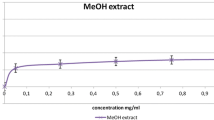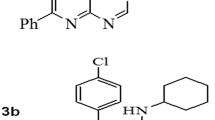Summary
Mezerein, the most active antitumor compound isolated from the daphne species of plants, has a structural similarity to phorbol myristate acetate (PMA), the major active compound isolated from croton oil. PMA is known to have tumor promoting activity and is a potent inflammatory agent. Mezerein has similarly been reported to have potent inflammatory properties but appears to be a weaker tumor promoter than PMA. While the effect of PMA on the function and metabolism of human blood cells has been extensively studied, there is little similar information concerning mezerein. Therefore, in these studies, we have compared the capacities of mezerein and PMA to activate the cytotoxic capacity and oxidative metabolism of human granulocyte (PMNs), monocyte, lymphocyte, and mononuclear cell (lymphocytes and monocytes) cultures in vitro. Mezerein stimulated the oxidative metabolism of PMNs in an identical manner to PMA as indicated by a burst in the activity of the HMPS pathway, the production of H2O2, hydroxyl radical and stable oxidants. Mezerein also stimulated the release of thromboxane B2 from PMNs. Both compounds activated the oxidative metabolism of monocytes but not the oxidative metabolism of lymphocytes. The enhanced oxidative metabolism of the phagocytic cells was associated with an increased cytotoxicity against human red cells which are sensitive to oxidant damage but not against the NK resistant Raji lymphoblast cell line or the SW1116 colon tumor cell line.
Of interest is that mezerein did not augment significantly the minimal cytotoxic capacity (NK activity) of mononuclear cells, monocytes or freshly isolated lymphocyte cultures against the tumor cell targets used in our experiments. However, lymphocyte cultures preincubated for 15 hours with mezerein had a marked enhancement of cytotoxicity against the tumor targets. This activation was not observed in similarly treated mononuclear cell cultures suggesting a suppressor activity of the monocytes.
Our data suggest that the potent inflammatory activity of mezerein similar to PMA, may be related to its capacity to activate the oxidative and arachidonic metabolism of phagocytic cells. In addition, the capacity of mezerein to activate the cytotoxic capacity of lymphocytes may relate to its reported in vivo antitumor activity.
Similar content being viewed by others
References
Kupchan SM, Baxter RL: Mezerein: Antileukemic Principle isolated from Daphne mezerein L. Science 187:652–653, 1975
Mufson RA, Fischer SM, Verma AK, Gleason GL, Slaga TJ, Boutwell RK: Effects of 12–0-Tetradecanoylphorbol-13-acetate and mezerein on epidermal ornithine decarboxylase activity, isoproterenol-stimulated levels of cyclic adenosine 3′∶5′ -monophosphate, and induction of mouse skin tumors in vivo. Can Res 39:4791–4795, 1979
Screening Data Summary Compound NSC 239072, Developmental Therapeutics Program, NCI, Bethesda, MD, 1985
Mastro AM: Phorbol Esters: Tumor promotion, cell regulation, and the immune response. In Lymphokines, 6:263–313. Editor Mizel, S.B. (Academic Press), 1982
Lee Lih-Syng, and Weinstein B: Tumor-promoting phorbol esters inhibit binding of epidermal growth factor to cellular receptors. Science 202:313–315, 1978
Jaken S, Shupnik MA, Blumberg PM, Tashjian AH: Relationship between mezerein-mediated biological responses and phorbol ester receptor occupancy. Can Res 43:11–14, 1983
Baxter CS, Fish LA, Bash JA: Parallel orders of reactivity in murine cells of mezerein and phorbol esters toward mixed lymphocyte response and promotion of tumorigenesis. Toxicology and Applied Pharmacology 59:173–176, 1981
Kensler TW, Mueller GC: Retinoic acid inhibition of the comitogenic action of mezerein and phorbol esters in bovine lymphocytes. Can Res 38:771–775, 1978
Driedger PE, Blumberg PM: Specific binding of phorbol ester tumor promoters. Proc Natl Acad Sci 77:567–571, 1980
Feuerstein N, Sahai A, Anderson WB, Salomon DS, Cooper HL: Differential phosphorylation events associated with phorbol esterr effects on acceleration versus inhibition of cell growth. Can Res 44:5227–5233, 1984
Hanania N, Castagna M, Shaool D, Zeliszewski D, Harel J: Effects of tumor promoters on the expression of a tumor-related multigenic set in human cells. Can Res 45:6058–6062, 1985
Yamasaki H, Fibach E, Nudel U, Weinstein IB, Rifkind RA, Marks PA: Tumor promoters inhibit spontaneous and induced differentiation of murine erythroleukemia cells in culture. Proc Natl Acad Sci 74:3451–3455, 1977
Sha'afi RI, White JR, Molski TFP, Shefcyk J, Volpi M, Naccache PH, Feinstein MB: Phorbol 12-Myristate 13-acetate activates rabbit neutrophils without an apparent rise in the level of intracellular free calcium. Biochem and Biophy Res Communications. 114:638–645, 1983
Zabos P, Kyner D, Mendelsohn N, Schreiber C, Waxman S, Christman J, ACS G: Catabolism of 2-deoxyglucose by phagocytic leukocytes in the presence of 12–0-tetradecanoyl phorbol-13-acetate. Proc Natl Acad Sci 75:5422–5426, 1978
Balazovich KJ, Smolen JE, Boxer LA: Ca2+ and Phospholipid-dependent protein kinase (protein kinase C) activity is not necessarily required for secretion by human neutrophils. Blood 68:810–817, 1986
Gaffney EV, Tsai S, Lingenfelter SE, Dell'Aquila ML, Gonda JE: Stimulation of diploid fibroblast growth with serum-free medium conditioned by mezerein-treated monocytic leukemia cells. J of Leuk Biol 35:489–500, 1984
Slaga TJ, Klein-Szanto AJP, Fischer SM, Weeks CE, Nelson K, Major S: Studies on mechanism of action of anti-tumor-promoting agents: their specificity in two-stage promotion. Proc Natl Acad Sci 77:2251–2254, 1980
Conkling P, Klassen DK, Sagone AL: Comparison of antibody-dependent cytotoxicity mediated by human polymorphonuclear cells, monocytes, and alveolar macrophages. Blood 60:1290–1297, 1982
Klassen DK, Conkling PR, Sagone AL: Activation of monocyte and granylocyte antibody-dependent cytotoxicity by phorbol myristate acetate. Infec and Immunity 35:818–825, 1982
Seaman WE, Gindhart TD, Blackman MA, Dalal B, Talal N, Werb Z: Suppression of natural killing in vitro by monocytes and polymorphonuclear leukoxytes. J Clin Invest 69:876–888, 1982
Zoschke DC, Messner RP: Suppression of human lymphocyte mitogenesis mediated by phagocyte-released reactive oxygen species: comparative activities in normals and in chronic granulomatous disease. Clin Immun and Immunopath 32:29–40, 1984
Dechatelet LR, Shirley PS, Johnston RB: Effect of phorbol myristate acetate on the oxidative metabolism of humam polymorphonuclear leukocytes. Blood 47:545–554, 1976
Weiss SJ: The role of superoxide in the destruction of ery-throcyte targets by human neutrophils. J Biol Chem 255:9912–9917, 1980
Weiss SJ, Slivka A: Monocyte and granulocyte-mediated tumor cell destruction. A role for the hydrogen peroxide-myeloperoxidase-chloride system. J Clin Invest 69:255–262, 1982
Ambruso DR, Johnston RB: Lactoferrin enhances hydroxyl radical production by human neutrophils, neutrophil particulate fractions, and an enzyme generating system. J Clin Invest 67:352–360, 1981
Weiss SJ, Klein R, Slivka A, Wei M: Chlorination of taurine by human neutrophils. Evidence for hypochlorous acid generation. J Clin Invest 70:598–607, 1982
Thomas EL, Grisham MB, Jefferson MM: Myeloperoxidase-dependent effect of amines on function of isolated neutrophils. J Clin Invest 72:441–454, 1983
Repine JE, Eaton JW, Anders MW, Hoidal JR, Fox RB: Generation of hydroxyl radicals by enzymes, chemicals, and human phagocytes in vitro. Detection with the anti-inflammatory agent, dimethyl sulfoxide. J Clin Invest 64:1642–1651, 1979
Sagone Jr AL, King GW, Metz EN: A comparison of the metabolic response to phagocytosis in human granulocytes and monocytes. J Clin Invest 37:1352–1358, 1976
Sagone Jr AL, Husney R, Guter H, Clark L: Effect of catalase on the proliferation of human lymphocytes to phorbol myristate acetate. J Immun 133:1488–1494, 1984
El-Hag A, Lipsky PE, Bennett M, Clark RA: Immuno-modulation by neutrophil myeloperoxidase and hydrogen peroxide: differential susceptibility of human lymphocyte functions. J Immun 136:3420–3426
Kraut EH, Sagone AL: The effect of oxidant injury on the lymphocyte membrane and functions. J Lab Clin Med 98:697–703, 1981
Grever MR, Thompson VN, Balcerzak SP, Sagone AL: The effect of oxidant stress on human lymphocyte cytotoxicity. Blood 56:284–288, 1980
Sagone Jr AL, Kamps S, Campbell R: The effect of oxidant injury on the lymphoblastic transformation of human lymphocytes. Photochem and Photobio 28:909–915, 1978
Sagone Jr AL, Husney RM: Oxidation of salicylates by stimulated granulocytes: Evidence that these drugs act as free radical scavengers in biological systems. J Immun 138:2177–2183, 1987
Sagone Jr AL, Decker MA, Wells RM, Democko C: A new method for the detection of hydroxyl radical production. Biochim et Biophysica ACTA 628:90–97, 1980
Sagone Jr AL, Husney RM, O'Dorisio MS, Metz EN: Mechanisms for the oxidation of reduced glutathione by zymosan stimulated granulocytes. Blood 63:96–104, 1984
Segal ML, Fertel RH, Kraut EH, Sagone Jr AL: The role of reactive oxygen species in thromboxane B2 generation by polymorphonuclear leukocytes. J Lab Clin Med 102:788–794, 1983
Dailegri F, Patrone F, Frumento G, Bailestrero A, Sacchetti C: Down-regulation of K cell activity by neutrophils. Blood 65:571–577, 1985
Seaman WE, Gindhart TD, Blackman MA, Dalal B, Werb Z: Natural killing of tumor cells by human peripheral blood cells. J Clin Invest 67:1324–1333, 1981
Mastro AM, Pepin KG: Suppression of lectin-stimulated DNA synthesis in bovine lymphocytes by the tumor promotor 12–0-tetradecanoylphorbol-13-acetate. Can Res 40:3307–3312, 1980
Nissen-Meyer J, Kildahl-Andersen O, Austgulen R: Human monocyte-released cytotoxic factor: Effect on various cellular functions, and dependency of cytolysis on various metabolic processs. J Leuk Biol 40:121–132, 1986
Masucci MG, Torsteinsdottir S, Pear W, Carstensen A, Klein E: Phorbol esters inhibit the functional activation of cytotoxic precursors in mixed lymphocyte cultures. J Immun 133:1755–1762, 1984
Ramos OF, Masucci MG, Klein E: Modulation of human blood lymphocyte cytotoxicity by the phorbol ester tumor promoter P(Bu)2: Increase of target binding, impairment of effector recycling, and activation of lytic potential which is independent of IL-2. Cel Immun 91:178–192, 1985
Taylor JL, Sedmak JJ, Jameson P, Lin YG, Grossberg SE: Markedly enhanced production of gamma interferon in murine T lymphocytes treated with lentil lectin and the diterpene ester, mezerein. J Interferon Res 4:315–327, 1984
Vandenbark GR, Kuhn LJ, Niedel: Possible mechanism of phorbol diester-induced maturation of human promyelocytic leukemia cells. J Clin Invest 73:448–457, 1984
Miyake R, Tanaka Y, Tsuda T, Kaibuchi K, Kikkawa U, Nishizuka Y: Activation of protein kinase C by non-phorbol tumor promoter, mezerein. Biochem and Biophys Res Commun 121:649–656, 1984
Myers MA, McPhail LC, Snyderman R: Redistribution of protein kinase C activity in human monocytes: Correlation with activation of the respiratory burst. J Immuno 135:3411–3416, 1985
Grzeskowiak M, Bianca VD, De Togni P, Papini E, Rossi F: Independence with respect to Ca2+ changes of the neutrophil respiratory and secretory response to exogenous phospholipase C and possible involvement of diacylglycerol and protein kinase C. Biochim et Biophys Acta 844:81–90, 1985
Shasby DM, Vanbenthuysen KM, Tate RM, Shasby SS, McMurtry I, Repine JE: Granulocytes mediate acute edematous lung injury in rabbits and in isolated rabbit lungs perfused with phorbol myristate acetate: role of oxygen radicals. Am Rev Respir Dis 125:433–447, 1982
Rosenberg S, Lotze M, Muul L, Leitman S, Chang A, Ettinghausen S, Matory Y, Skibber J, Shiloni E, Vetto J, Scipp C, Simpson C, Reichert C: Observations on the systemic administration of autologous lymphokine-activated killer cells and recombinant interleukin-2 to patients with metastatic cancer. N Eng J Med 313:1485–1492, 1985
Author information
Authors and Affiliations
Additional information
Dr. Barton is currently a resident in Medicine at the Unviersity of Chicago.
Rights and permissions
About this article
Cite this article
Barton, K., Randal, G. & Sagone, A.L. The effects of the anti-tumor agent mezerein on the cytotoxic capacity and oxidative metabolism of human blood cells. Invest New Drugs 7, 179–188 (1989). https://doi.org/10.1007/BF00170855
Issue Date:
DOI: https://doi.org/10.1007/BF00170855




